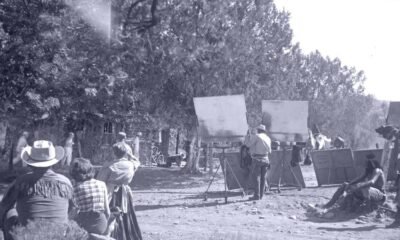faith
Unveiling Easter: The Surprising Origins and Hidden Gems of the Holiday

The date of Easter, marking the resurrection of Jesus, varies each year. This fluctuation occurs because Easter is celebrated on the first Sunday following the first full moon after the spring equinox. As a religious studies scholar focused on early Christianity, I have explored the complex origins and evolution of this integral holiday over the centuries. Similar to other significant holidays such as Christmas and Halloween, Easter reflects a blend of Christian and non-Christian traditions that have developed over time.
Many major holidays share a connection to the seasons. In the case of Christmas, for instance, the New Testament does not specify the date of Jesus’ birth. However, scholars suggest that December 25 was chosen because it coincides with the Roman winter solstice. This symbolic date emphasizes the idea of Jesus as “the light of the world,” as mentioned in the Gospel of John. Similarly, Easter’s timing aligns closely with the vernal equinox, a period when day and night are approximately equal. For those in the Northern Hemisphere, spring heralds the return of life after winter, making it a fitting moment to celebrate the resurrection.
The term “Easter” likely traces back to Eostre, a pre-Christian goddess celebrated in England at spring’s onset. The Venerable Bede, an influential British monk from the late seventh century, noted this connection in his writings. He described how the month in which Christians celebrated Jesus’ resurrection, Eosturmonath, was named after Eostre. Thus, even as Christians adopted this celebration, they retained the name linked to the goddess.
While “Easter” is commonly used in English-speaking countries, many cultures refer to it as “Passover,” or variations like “Pascha” in Greek. Passover commemorates the liberation of the Jewish people from Egyptian slavery, as recounted in the Book of Exodus. During Jesus’ time, the festival held intense significance, particularly as the Jewish community faced Roman rule. Jesus participated in the Passover festivities in Jerusalem, leading to significant events that led to his crucifixion around A.D. 30.
After Jesus’ death, early Christians saw the resurrection as a pivotal moment, aligning it closely with Passover. Some believers, known as Quartodecimans, chose to commemorate it on the date of Passover; however, others opted to celebrate on a Sunday, the day they believed Jesus rose from the dead.
In A.D. 325, Emperor Constantine convened the Council of Nicaea, addressing numerous critical issues, including the nature of Christ. A fundamental outcome of the council was the decision to celebrate Easter on a Sunday, thereby standardizing its observance to the first Sunday after the first full moon following the vernal equinox.
Historically, Easter was more predominantly celebrated by Catholics in early America compared to Protestants, with the latter often viewing it as having too many non-Christian influences. Family-oriented celebrations began taking shape in the 19th century, driven by changing societal attitudes toward children. According to historian Stephen Nissenbaum, previous generations did not emphasize childhood; however, the 17th century saw a growing acknowledgment of the joyous aspects of youth.
This shift led to the rise of Easter eggs and the Easter Bunny in holiday traditions. The practice of decorating eggs has roots in medieval festivities, symbolizing new life. In Eastern Europe, this tradition includes various elaborate folklore and customs. The concept of an “Easter hare” delivering eggs to well-behaved children emerged from German traditions in the 17th century. When German immigrants arrived in Pennsylvania, they introduced this custom, which eventually evolved to feature the more familiar Easter Bunny.
As Christians around the world gather this spring to commemorate the resurrection, they will find that the prominent figures of the Easter Bunny and decorated eggs serve as meaningful reminders of the holiday’s ancient, multifaceted origins.


















